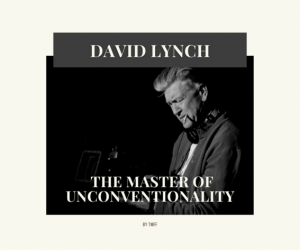Has it ever happened to you to watch a film or an episode from a series on a rather empty stomach, and suddenly you felt super hungry once food appeared on screen? I especially remember that as a kid, I would see some appetizing meals or snacks on the TV screen, and suddenly wish for it in real life. Food choices in films can be really interesting – while some might be entirely random, others might constitute important plot points, act as metaphors or as ways to show off cinematographic talent. I thought we could explore some of these… since I was feeling a little bit hungry this evening.
1. Pulp Fiction: cheeseburger
Cheeseburgers and culture shock are two of the main themes that hitmen Jules Winnfield and Vincent Vega debate upon while they are driving towards a meet-up. Jules mentions his disbelief at the French name for a quarter pounder, while Vincent also explains about life and culinary choices in Amsterdam, and how they differ from the American ones. In a classic bit of Tarantino dialogue, he not only pokes fun at stereotypes centred around fast food and social issues, but also offers a thematic buildup for the next scene.
2. Twin Peaks: cherry pie and coffee
Agent Cooper often has cherry pie at a local restaurant in the town of Twin Peaks, and he’s probably the biggest coffee drinker in the city. However, it’s not just the fact that he consumes industrial quantities of these things, but it’s also how much he enjoys every second of it – he will never shut up about how damn good the coffee is, and how amazingly delicious the pie is. These little quirks serve to characterise the FBI special agent, who despite being a thorough professional, always finds time and enthusiasm to enjoy the little things in life.
3. Kramer vs Kramer: french toast
This one serves a much more plot-centric role in the much acclaimed film. French toast is a recipe that is incredibly simple to prepare, and yet Dustin Hoffman’s Ted Kramer fails miserably when he tries to cook this for his son. He even get egg shells in the batter, which according to him makes the whole thing a bit crunchier. Of course, this is to show his complete helplessness when it comes to certain household tasks, clearly highlighted here in the absence of his wife.
4. Tampopo – ramen
This is not a popular film in the case of Western audiences, but definitely one that should not be missed. It revolves around human beings’ relationship with food, and pretty much is a celebration of culinary joys. Most of it happens in the context of a family-owned noodle shop, and so the clear recipe in this case is a nice bowl of ramen.
5. Inglorious Basterds – apple strudel
Another Tarantino movie here, so it means the man certainly knows his food. In the case of Inglorious Basterds, however, the apple studel eaten by Hans Landa also plays a stikingly visual role. It is not only the context within which the colonel devours the traditional dessert, but how he does it. The camera lingers an unnatural amount of time on the piece of strudel, and some extreme close-ups highlight its important role in building the visual metaphor of the scene.
6. Parasite – ram-don
Finally, let’s go with a more recent example from this year’s Best Picture winner. In here, the ram-don prepared by the new housekeeper in an extreme hurry manages to mirror the film’s main themes, while poking fun at the absurdity of the situation. Basically, the dish has a dual meaning, stemming from its two extremely different components. The noodle and soup base is actually called ‘jiapaguri’, and consists of a mixture of two instant noodle packages, which are readily available and can be bought very cheaply. However, the beef used as a topping is Hanu – the Korean equivalent of an extremely fancy and pricy cut of beef, similar to Japanese Wagyu. It’s the combination of these two polar opposites that provides the irony.
















